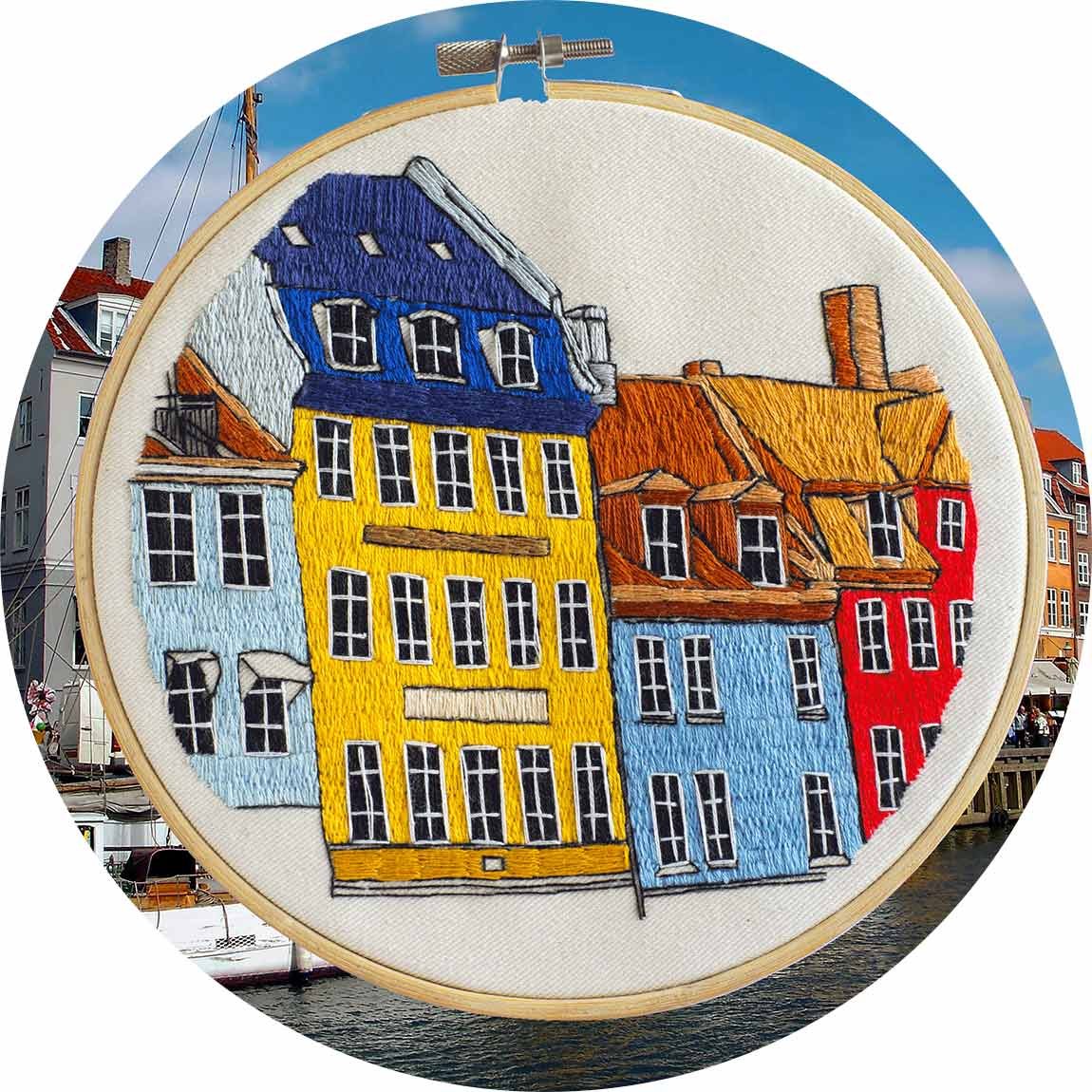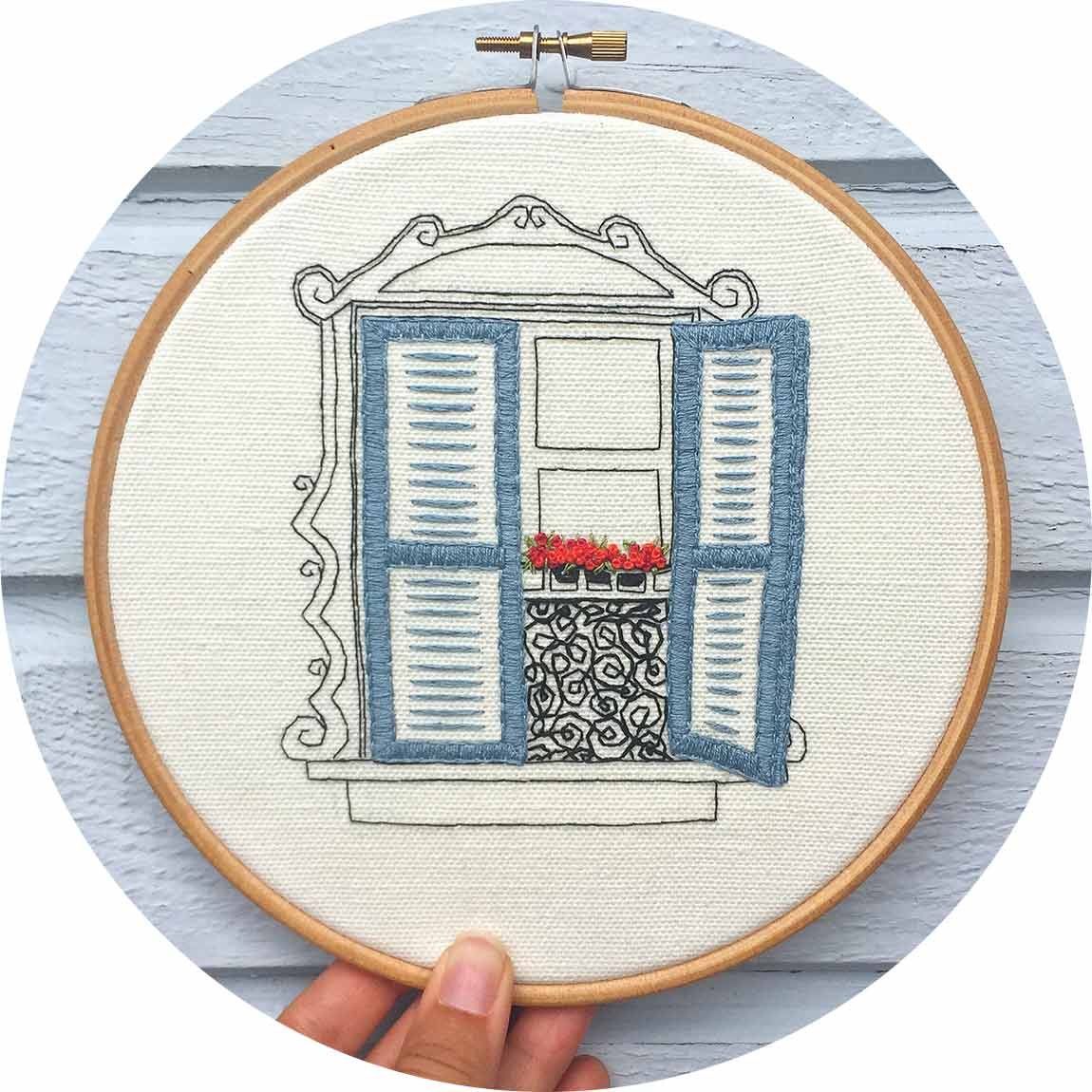History Of Embroidery And Its Rise In Popularity
Modern embroidery is on the rise since a few years. As influential embroidery artists, Charles and I found it intriguing to dig into the history of embroidery. But first let’s look at where we find embroidery today. I dare to say that we’ve all witnessed the exponential presence of embroidery in modern societies. For example, as I walk the streets of Paris,
I see shop-windows full of embroidery on clothes and accessories.
The application of embroidery is endless! Add some stitches to your shoes, clothes or bags to upcycle their look. Or perhaps embroider a unique artwork to decorate your walls. An article in the Telegraph confirms how modern fashion brands such as Gucci, Kenzo and more use embroidery to give their products a unique and artistic look.
Some of my personal favourites are the embroideries on Alexander McQueen’s collections. Absolutely exquisite hand work! However, modern embroidery is not only present on wearable commodities. It has also gained significant presence in the contemporary art scene. More and more artists explore ways to express themselves through thread and needle. For example, in the last couple of years alone, Charles and I have witnessed a drastic exponential growth of modern needlework. But why embroidery?
Example of inspiring embroidery art on a leather jacket by Alexander McQueen
Modern embroidery as a way to relax and disconnect
Along with the growth of social media and the presence of internet, people find themselves
increasingly stressed. No wonder as we’re constantly connected and “available”. Thus, embroidery has gained significant attention partly due to the growing awareness of mental health.
We understand why!
Rue Réaumur Embroidery Pattern
Work in progress of one of my Paris embroidery patterns. If you click on the image you can access the pattern as a downloadable pdf and give it a try!
Modern hand embroidery is an incredibly relaxing and meditative art form. Stitch by stitch you’re able to disconnect and concentrate on the growing embroidery piece in your hands.
To create hand work has always been present through the age of man. Whether it was to create tools for hunting or clothes to wear. To be a good craftsman and “handyman” had huge benefits for your survival. As a result, our bodies have developed award systems through the release of happiness hormones whenever we perform acts that are beneficial for survival. It may sound far-fetched, but our bodies and brains haven’t had time to adapt to our modern industrial and technological societies. Thus they’re still reacting to stimulus related to survival mechanisms.
Hence, when we create with our hands our brains are happy, which makes our bodies happy in turn. Charles and I aren’t the only ones who’ve experienced the incredibly calming effects of modern embroidery. Thousands of new embroidery artists share their experiences and work online, which ultimately contributes to the exponential growth of the embroidery medium.
A quick glance at the history of embroidery, it’s an ancient art-form to say the least. It traces back to 30 000 B.C., from which archaeologists have found fossils of heavily hand-stitched clothes and boots. Other ancient works have been prominently found in China and India, consisting of chain stitch on silk. Traveling from ancient to modern history, we can find embroidery appliqué all over the world. Whether for decorative or practical purposes, embroidery is practised across cultures and classes. The upper-class fine ladies, would be taught decorative embroidery, whereas the working class women were mostly taught mending, quilting and especially marking.
To mark sheets, tablecloths, napkins, bed-linens and more with embroidered letters and numbers, had a highly practical purpose.
The embroidered letters would usually be the family’s initials or similar. In fact, thanks to embroidered marks the women in charge of the laundry could easily know which pieces that belonged together.
Thereby, they’d be able to wash the sets together and let them “age” at the same pace.
At the time of housekeepers, to be a good “embroidery marker”, was a marketable skill. Because the housekeeper would most likely be asked to embroider quite a few fabrics in the home of the employer.
Furthermore, it wasn’t just a question of how pretty the embroidered letters looked. But it was also a question of speed. Thus young working class, would spend significant time practising both their style and speed in needlework.
Perhaps this close-up image of my Casa Batllo embroidery design
could be considered as a decorative sampler with various combinations of embroidery stitches. This is another of our unique embroidery patterns that you can stitch if you click on the image.
The embroidery sampler technique
To learn and practise various letters and embroidered typo-graphs, women would practise on samplers. Whenever they met another woman with samplers of different typo-graphs, they’d copy them and save them to their own “stitched book”. In case you’re not sure of what a sampler is, imagine a small (often 10x10cm square) piece of fabric with a specific embroidery design or technique on it. Due to it’s convenient size, it was relatively cheap in material as well as easy to store.
It’s very interesting to know the origin of the sampler technique. As modern embroidery artists, we teach the sampler technique as a way to explore and experiment with your creativity. Furthermore, we know that we’re not alone in this approach. For example the guys at the Textile artist puts an even greater emphasise on the sampler technique through their online training.
If we look at embroidery from a more exclusive lens, aristocratic women would practise decorative designs on their samplers instead of marking practises. Thus embroidery as an art form was more for the upper-class women. In addition to the decorative style, the enormous amount of time involved added to the medium’s luxuriousness. Hence, an embroidered dress would be considered more valuable due to the great time involved in the making of it.
Hand Embroidery As A Part Of Social Movements And Female Empowerment
As mentioned throughout this article, embroidery has mostly been connected with women. My grandmother ones told me that when she was young, sewing was often an excuse for women to “get out of the house” and meet other women. As long as they conducted some of the household work (such as marking) they were excused to meet and chat.
This also gave birth to embroidery as a medium used for social movements. Women would meet up on the basis that they were “working” or “marking”. In reality it opened for two opportunities: To embroider political messages on their handkerchiefs as well as organise women’s rights movements. For example the suffragettes were frequently seen gathering around embroidery and sewing activities.
Mandala Embroidery
This is the finished embroidery art work that I completed as a part of the work in South India
Another more personal example…
Another more current example is from December 2015 when I worked for an NGO in India. The organisation I worked for used hand embroidery to empower women for financial independence. For example, the organisation would assist women to start small embroidery and sewing businesses. It would allow them to become more independent from their husbands. Something which is especially important in the many poor segments of society. The rigid hierarchical structures in India, makes it difficult for impoverished women to excel in society. For example, it’s only the men who will receive the family income into his account, regardless of who worked for it.
Sadly, in many of the villages that I visited, the men used the small funds to buy alcohol. However, if the women would earn some money on their own, they could ensure the well-being of their children regardless of the pursuits of their husbands. Thereby making embroidery crucial to the well-being of their families.
New To Modern Embroidery?
Perhaps you’re new to this wonderful art medium? Or you’ve tried more traditional flower embroidery patterns and are ready to try something new. We’ve specialised in authentic architectural hand embroidery designs inspired from cities around the world. If you’re a beginner to embroidery, you may even prefer to try one of our online courses. We’ve got something for all flavours whether you’d like to personalise your clothes with embroidery, learn the architectural embroidery style or perhaps even how to create your own embroidery designs.
Saint Michel Quarter Embroidery Design
Overview of the stitching process of my hand embroidery design inspired from Saint Michel area in Paris. It’s always nice to see the step-by-step process of any designs to better understand how each stitch contributes to an embroidered artwork. Click on the image and you can download this exact design as an embroidery pattern.
Lastly, don’t miss to sign up for our free video library with all our most used stitch techniques. It’s not the greatest number of stitches that will make you an embroidery expert. Rather, it’s the way you combine and overlap them that brings out the true creativity. Very much like the women in the history of embroidery used samplers to practise, we encourage you to do the same!
Below are just a couple of our favourite Architectural designs that we know you’ll love!
This hand embroidery pattern of Notre Dame de Paris fits perfectly into a hoop of 20cm (8") or larger. The pattern will be sent to your email as an instantly downloadable PDF immediately after purchase.
The pdf also includes
🎨 colour guide
🔖 stitch guide
📖 general technique guide so that you can embroider the design with confidence.
This hand embroidery pattern of the Charming Window of Paris fits perfectly into a hoop of 18cm (7") or larger. The pattern will be sent to your email as an instantly downloadable PDF immediately after purchase.










